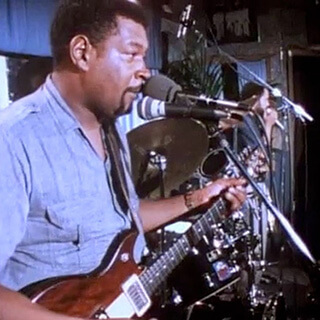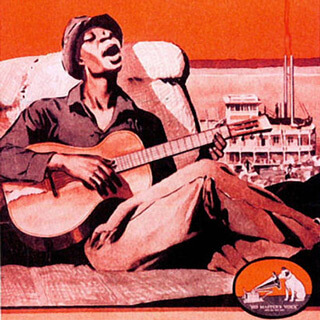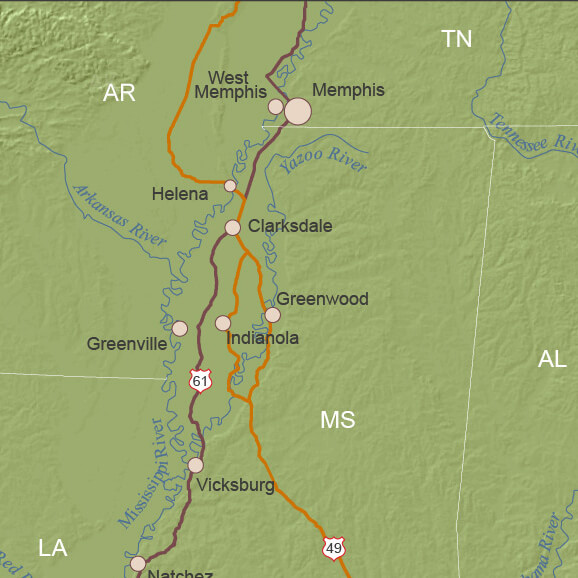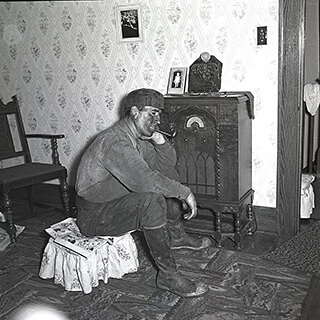Overview
Ryan André Brasseaux reviews Edward Comentale's Sweet Air: Modernism, Regionalism, and American Popular Song (Urbana: University of Illinois Press, 2013).
Review
 |
Edward Comentale's Sweet Air: Modernism, Regionalism, and American Popular Song is the latest work in a growing corpus of vernacular American music studies that seeks to understand the relationship between tradition and modernity, music and society. Sweet Air stands at the crossroads of several historiographical paths, including recent approaches in cultural studies and vernacular music history.1Comentale uses Josh Kun's Audiotopia: Music, Race, and America (Berkeley: University of California Press, 2005) as a model for understanding the consumption of American recorded music. His work also intersects with a growing literature that seeks to emphasize the modern dimensions of vernacular American music before, during, and immediately after World War II: Patrick Huber, Linthead Stomp: The Creation of Country Music in the Piedmont South (Chapel Hill: University of North Carolina Press, 2008); Glenn C. Altschuler, All Shook Up: How Rock 'n' Roll Changed America (New York: Oxford University Press, 2004); John W. Troutman, Indian Blues: American Indians and the Politics of Music, 1879–1934 (Norman: University of Oklahoma Press, 2012); Barry Mazor, Meeting Jimmie Rodgers: How America's Original Roots Music Hero Changed the Pop Sounds of a Century (New York: Oxford University Press, 2012); John Minton, 78 Blues: Folksongs and Phonographs in the American South (Jackson: University Press of Mississippi, 2010). However, Comentale sets out on his own path towards a modernist interpretation of recorded music between 1910 and 1960. His goal is to uproot roots music by disentangling "vernacular music from certain romantic myths of origin and identity" while exploring its "inherent modernism" (7). By so doing, the author also veers away from traditional modernist studies which privilege urban life, print culture, and a bourgeois perspective.
Sweet Air is Comentale's attempt to relate his personal experiences with consuming vernacular and popular music to "history at large" (6). Music exists out of time and space, he argues, though consumption creates a portal through which a listener can inhabit this audiotopia.2Audiotopia is Josh Kun's term. Audiotopia represents the visceral, emotional, and intellectual experiences of consuming recorded music. For Kun, "music functions like a possible utopia for the listener, that music is experienced not only as sound that goes into our ears and vibrates through our bones but as a space that we can enter into, encounter, move around in, inhabit, be safe in, learn from." Kun, Audiotopia, 2. "If my own feelings are constantly surging into and out of musical forms—decisively public forms—I am curious about how these processes work on a larger scale" (6). The author's particular interest lies in popular music's most abstract qualities, including feeling and form. Comentale examines what he calls sound's "sensual qualities" (defined as timbre, tone, duration); song's "formal dimensions" (lyricism, refrain, genre); and means of reproduction, transmission, and consumption (record, radio, etc.) (7). Along with secondary literature, Comentale culls together various sources—including select song lyrics, trade magazine articles from Rural Radio, Woody Guthrie's novel Bound for Glory, Marcel Duchamp's art, and fan testimonials—to generate a narrative that squarely places vernacular American music in modernist discourses.
Throughout Sweet Air, Comentale defines the experience of consuming recorded vernacular music through a binaristic framework. In each chapter, the author identifies what he imagines to be the broad spectrum of what recorded music "might have 'expressed' or 'represented'" within the "abstraction of musical space and time" (7). For instance, blues for Comentale is "variously a feeling, a mood, a nameless threat, a person, a lover, a bossman, a mob, and, of course, the Devil himself. It is often experienced as both cause and effect, action and reaction, and it can be used as both hex and counterhex, poison and antidote, pain and relief. Most importantly, the blues is both the cause of song and song itself, both an active emotion and its formal expression, and, in this, it blurs the boundary between inside and out, depth and surface, form and feeling" (49). The author deploys this mode of thinking across performers and genres. Elvis Presley's singing style, he argues, is "always doubled, at once opening and closing, losing and then finding itself in its own cheap performance" (180). These kinds of juxtapositions are the crux of what Comentale identifies as "vernacular modernism," or a "vital forum of exchange and transformation for those otherwise excluded from traditional forms of power and prestige" (7).
 |
| Jailhouse Rock, 1957. Promotional image featuring the film's star Elvis Presley. Courtesy of Metro-Goldwyn-Mayer, Inc. |
The book is organized around chapters devoted to individual genres, and often a single recording artist. Comentale begins by chronicling the Mississippi Delta's industrialization as seen through Charlie Patton's proto-modernist blues. The Delta's rapid and violent modernization contributed directly to the raw emotions captured on 78 RPM recordings. Phonograph technology in turn offered the denizens of the Delta a "talking cure" akin to Freudian psychotherapy, rather than reproducing the logic of racial trauma encoded in Mississippian society. "[W]e can look to the 'talking machine,'" Comentale suggests, "as a means of personal and cultural transference, a modern device capable, in its technological fusion of feeling and form, of 'repeating, remembering, and working through' the frightening experiences of modernity and thereby sustaining the original dynamism of the blues" (59). Recorded blues as sonic therapy worked only because of its reproducibility and capacity for repetition.
If the blues represented the emotional confrontation with modernity for individuals like Charlie Patton, Sweet Air contends that country music expressed the sentiments of the entire modernizing New South. "Country song translates the anxiety of its moment into sonic form and thus creates an alternative presence and consistency for listeners confronting their own implacable modernity" (73). Comentale examines the careers of Fiddlin' John Carson, the Carter family, the Delmores and Vagabonds, and radio producer John Lair in relation to the modernization of the New South. He is not so much interested in a performer's conscious engagement with modernity as he is with the "disorentiation" and "defamiliarization" of what he calls traditional music forms. Early country music located its power in "its detachment, on the very dematerialization of regional space and time" (84). Comentale argues that the Great Migration (framed here as a kind of "regional trauma"), the professionalization of recording artists, the formalization of songs and lyrics which "at once preserved and transformed, incorporated and dissolved" (103) the South, and the rise of country music radio collectively contributed to a pervasive melancholia symptomatic of modernity.
Woody Guthrie's politically charged music forms the basis of chapter three, "A Rambling Funny Streak." For Comentale, Guthrie's "cheap, derelict song represents not just a new vernacular modernism, but also the first pop counterculture" (122). The troubadour's oeuvre—especially his use of refrains—pushed the proletariat avant-garde in "more productive" (122) ways than either the Popular Front or the idealized aesthetic of high modernism. And yet, Guthrie made aesthetic form paramount. Using "This Land is Your Land" as an example, Comentale argues that the abstract qualities of song and sound allowed Guthrie to transcode "everyday life into a looser, immaterial set of relations" (155). These dynamics ultimately allowed the singer/songwriter to claim "the entire land with his voice," as Comentale explains, "or, rather, he declaimed it—he sang it in order to free it, in an open, vital process, one that asserted, with each refrain, the utterly provisional and ultimately ridiculous nature of all such claims" (159). Guthrie's aesthetic effectively reflected modernity back to his audience while offering a model for transforming regional tradition into the rock and roll and popular music that came to dominate the 1950s and 1960s.
 |
| Fountain, 1917. Photograph by Alfred Stieglitz. Sculpture by Marcel Duchamp. From Henri-Pierre Roche, Beatrice Wood, and Marcel Duchamp, eds., The Blind Man No. 2 (New York, 1917), 4. |
Chapter Four, "Four Elvises," is perhaps Sweet Air's most ambitious essay. Here the author considers "Elvis" as a commodity in an emerging era of global fan culture. Comentale's discussion is framed by a dubious comparison to Dadaist art of Marcel Duchamp. "Whereas Duchamp lifts trash into a new context, and thus presents it as high art," he explains, "Elvis lets everything fall out of context, and it all becomes low art" (166). The four Elvises in this chapter are the "Readymade Elvis," "Dirty Elvis," "Mother Elvis," and "Third Elvis." Readymade Elvis is Comentale's most explicit comparison of Duchamp and Presley, "two brilliant artists of everyday life" (166–167). The author likens a urinal (Duchamp's Fountain) to the consumable Elvis (records, posters, photographs, etc.) through the aesthetic of cheapness and raunchiness. Dirty Elvis is an analysis of Elvis' vocal performances on a handful of his early recordings, including "Blue Moon of Kentucky" and "Baby, Let's Play House." The author then uses the musician's Oedipal relationship with his mother, Gladys Presley, as a point of departure to discuss Elvis' affective body and its influence on his fans in Mother Elvis. In the "Third" and final Elvis, the author focuses on the culture of consuming Elvis memorabilia and ephemera—the iconographic Elvis. The author is concerned with the Duchampian side of Elvis fandom—the exaltation of everyday objects associated with the King.
"I've never been to Lubbock County," Comentale admits, "but I'm sure it must be beautiful . . . I imagine an immense space carved up in abstract strokes, broad swaths of color and clean, stark lines—a quiet geometry of work and rest, pain and hope" (205). Comentale hears the expansive space of this imaginary Lubbock in recordings by Buddy Holly (though the Crickets recorded in Clovis, New Mexico). In the final chapter, "( )," Comentale considers the emptiness of echo and reverb in Holly's recording sessions as a means of "tracking the ways in which pop music at once rejects, recalls, and then returns to something like history" (213). Comentale uses Jacques Derrida's theory of "expression," composer John Cage's experiments with silence, and the Pop Art Movement to frame his discussion of Buddy Holly as both songster and producer. The studio meanwhile comes to represent the site where "the echo effect of late modernity" (209) can be heard most clearly. "I want to show how Holly's three-minute masterpieces," Comentale succinctly explains, "forged in the non-space of the studio, chirping brightly in the pop air, signal both renewal and reorientation from within the very wreckage of late modernity" (213).
Sweet Air is a valiant attempt to understand the ways in which the forces of modernity have shaped vernacular musical expression. Comentale's reading of the blues as a kind of sonic therapy is an effective use of Freudian thought as applied to vernacular music. The author also succeeds in applying his binary system of thought to country music. As he implies, juxtaposition characterized the dynamic between the content of recorded songs and radio emissions and the milieu in which country artists circulated. Meanwhile, industry representatives encouraged the mediation of hillbilly music's image. Artists followed suit by exaggerating their rural roots, at times performing as rubes, though the images were decidedly the product of a modern publicity campaign. Singers often evoked a nostalgic, rural, and bucolic South, though they might be, as Jimmie Rodgers proclaimed in 1932, "growing tired of these big city lights / tired of the glamour, tired of the sights."3Jimmie Rodgers, "Miss the Mississippi and You," recorded August 29, 1932, Victor 23736, 78 rpm. Artists were not strangers to the currents of modernity. Fiddlin' John Carson's musical career attached him to urban Atlanta. Divorce tore through the Carter family, even as the group continued to perform as a "family" band. These forces collectively projected an image of an imaginary bucolic South at odds with the realities of an industrializing New South. "In song," Comentale elaborates, "the South is at once preserved and transformed, incorporated and dissolved; the region as a whole is suspended, at once mired and released from its own past" (103).
The South in Sweet Air is largely amorphous, evocative, and imagined. "How do you picture the Mississippi Delta?," Comentale asks. "What images come to mind? A muddy river? A dusty highway?" (33). The region serves as a backdrop, a geographic point of reference and, in chapter one, a protagonist. Hence, Sweet Air is paradoxically a book about the South, and a book that has nothing to do with this section of the United States. That is because Comentale's interests lie in the ways vernacular modernism "eroded local ties and opened up the sonic terrain in new ways" (22). Though Comentale explains that he "decided to focus each chapter on a specific region and its established regional styles" (22), his treatment of song's "very airiness—its immateriality, its ephemeral drift" (15)—allows the author to probe "the way musical forms circulate beyond their origins" (4). This phenomenon, which Comentale dubs "deterritorialization," is perhaps Sweet Air's most provocative contribution to vernacular music studies. Recorded music, and mass media more broadly, become the very agents of modernity generating "a massive deterritorialization of vernacular tradition" (4). Deterritorialization destabilizes notions about tradition, regional cultural forms, and indeed the South as a whole.
Despite its contributions, Sweet Air falls short in several areas. While Comentale is dedicated to undermining the romantic tinge coloring interpretations of vernacular American music, the author has in effect created his own rhetorical audiotopia. At times his account becomes fixated on the authentic and romantic dimensions of vernacular music, in part because the author is admittedly "smitten" (114) with the music and artists he examines. For instance, while scoffing at a mythical Mississippi Delta filled with dusty highways, where "[t]he dark outline of a man in natty suit and hat, guitar case in hand, waiting for a ride" (33) haunts the landscape at dusk, he describes a 1969 television performance by Son House with the same tone and timbre. During the performance, the blues man's "weathered hand beats against the steel" of his guitar. "The movement spreads to his entire body, which heaves and jerks in forceful counterpoint, until his face finally crumples in pain—eyes closed, teeth clenched—as if wincing against the very sound of his song" (56). House becomes the embodiment of an authentic and "endless black pain" (56). That pain might be attributed to the rapid and violent industrialization of the Mississippi Delta and the sense of loss that accompanies modernity, as Comentale argues, but it also grew from a life at the bottom of America's socio-economic hierarchy and seemingly endless racism and racial oppression.
Though Woody Guthrie is used as a foil to demonstrate vernacular music's relationship to class, Comentale misses an opportunity to demonstrate just how class contributed to the form and feeling of a consumable vernacular music. Guthrie's evolution was markedly different from Charlie Patton's, or even Elvis Presley's, because he had fallen from a place of relative privilege onto the path of cultural dereliction. Guthrie was a novelist, a fledgling practitioner of the beaux arts, a musician who could and did escape America's "slummy edges" (132) when he chose to do so. Alternatively, vernacular artists like Patton and Presley followed an opposite trajectory. Born into poverty, they worked all their lives to escape the abject geographies of the US South. But by not addressing class more fully, Sweet Air fails to raise broader, more nuanced socio-economic questions about how songs evoke emotion.
 |
| The Milkman Tunes in at Milking Time, ca. 1923. Courtesy of Library of Congress, Prints and Photographs Division, LC-USZ62-60682. |
Comentale recognizes that music's intrinsic value lies not only in what it expresses and represents, but also in music's power to enact "new attitudes and emotions within an otherwise bewildering world" (7). But the author's selective use of lyrics and song to assert the broader emotional life of those creating the largely working-class cannon of vernacular American blues, country, folk, and rockabilly/rock and roll ultimately mutes the voices of those consuming these same materials. With the exception of Rural Radio excerpts (chapter three) and a discussion of fan culture (chapter four), there is little evidence to suggest that a vernacular modernist forum transformed the attitudes and culture of those outside of traditional power structures. Who is listening? What visceral experiences are elicited? Does everyone have the same transformative experience? Just as there are many Souths, there are surely a plethora of discernible variables—race, class, gender, linguistic and religious orientation, regionalism, and a host of others—that could provoke different reactions and feelings that individuals might have assigned to vernacular music between 1910 and 1960, feelings that might be different from the sentiments expressed by the progenitors of high modernism.
Cultural studies critics will find substantial food for thought in this volume. Historians of vernacular music, on the other hand, will balk at Sweet Air's spiraling hermeneutics and hyperbolic tendencies. Students, meanwhile, will find some of the arguments oblique. Comentale makes an important argument about the development of vernacular and popular America music before and after World War II. But, in the end, Sweet Air may reveal more about the relationship between the examiner and his texts, rather than the artists whose engagement with modern America helped to forever transform the South. 
About the Author
Ryan André Brasseaux is Dean of Davenport College at Yale University, where he also teaches American Studies. He is the author of three books, including Cajun Breakdown: The Emergence of an American-Made Music. Brasseaux’s current research focuses on the culture and politics of French North America.
Recommended Resources
Text
Altschuler, Glenn C. All Shook Up: How Rock 'n' Roll Changed America. New York: Oxford University Press, 2003.
Cobb, James C. The Most Southern Place on Earth: The Mississippi Delta and the Roots of Regional Identity. New York: Oxford University Press, 2002.
Duck, Leigh Anne. The Nation's Region: Southern Modernism, Segregation, and US Nationalism. Athens: University of Georgia Press, 2006.
Huber, Patrick. Linthead Stomp: The Creation of Country Music in the Piedmont South. Chapel Hill: University of North Carolina Press, 2008.
Kun, Josh. Audiotopia: Music, Race and America. Berkeley: University of California Press, 2005.
Mazor, Barry. Meeting Jimmie Rodgers: How America's Original Roots Music Hero Changed the Pop Sounds of a Century. Oxford: Oxford University Press, 2009.
Minton, John. 78 Blues: Folksongs and Phonographs in the American South. Jackson: University Press of Mississippi, 2008.
Troutman, John W. Indian Blues: American Indians and the Politics of Music, 1879–1934. Norman: University of Oklahoma Press, 2009.
Web
The Delta Blues Museum. http://www.deltabluesmuseum.org.
Marcel Duchamp World Community. http://www.marcelduchamp.net.
The Official Woody Guthrie Website. http://www.woodyguthrie.org.
Similar Publications
| 1. | Comentale uses Josh Kun's Audiotopia: Music, Race, and America (Berkeley: University of California Press, 2005) as a model for understanding the consumption of American recorded music. His work also intersects with a growing literature that seeks to emphasize the modern dimensions of vernacular American music before, during, and immediately after World War II: Patrick Huber, Linthead Stomp: The Creation of Country Music in the Piedmont South (Chapel Hill: University of North Carolina Press, 2008); Glenn C. Altschuler, All Shook Up: How Rock 'n' Roll Changed America (New York: Oxford University Press, 2004); John W. Troutman, Indian Blues: American Indians and the Politics of Music, 1879–1934 (Norman: University of Oklahoma Press, 2012); Barry Mazor, Meeting Jimmie Rodgers: How America's Original Roots Music Hero Changed the Pop Sounds of a Century (New York: Oxford University Press, 2012); John Minton, 78 Blues: Folksongs and Phonographs in the American South (Jackson: University Press of Mississippi, 2010). |
|---|---|
| 2. | Audiotopia is Josh Kun's term. Audiotopia represents the visceral, emotional, and intellectual experiences of consuming recorded music. For Kun, "music functions like a possible utopia for the listener, that music is experienced not only as sound that goes into our ears and vibrates through our bones but as a space that we can enter into, encounter, move around in, inhabit, be safe in, learn from." Kun, Audiotopia, 2. |
| 3. | Jimmie Rodgers, "Miss the Mississippi and You," recorded August 29, 1932, Victor 23736, 78 rpm. |



